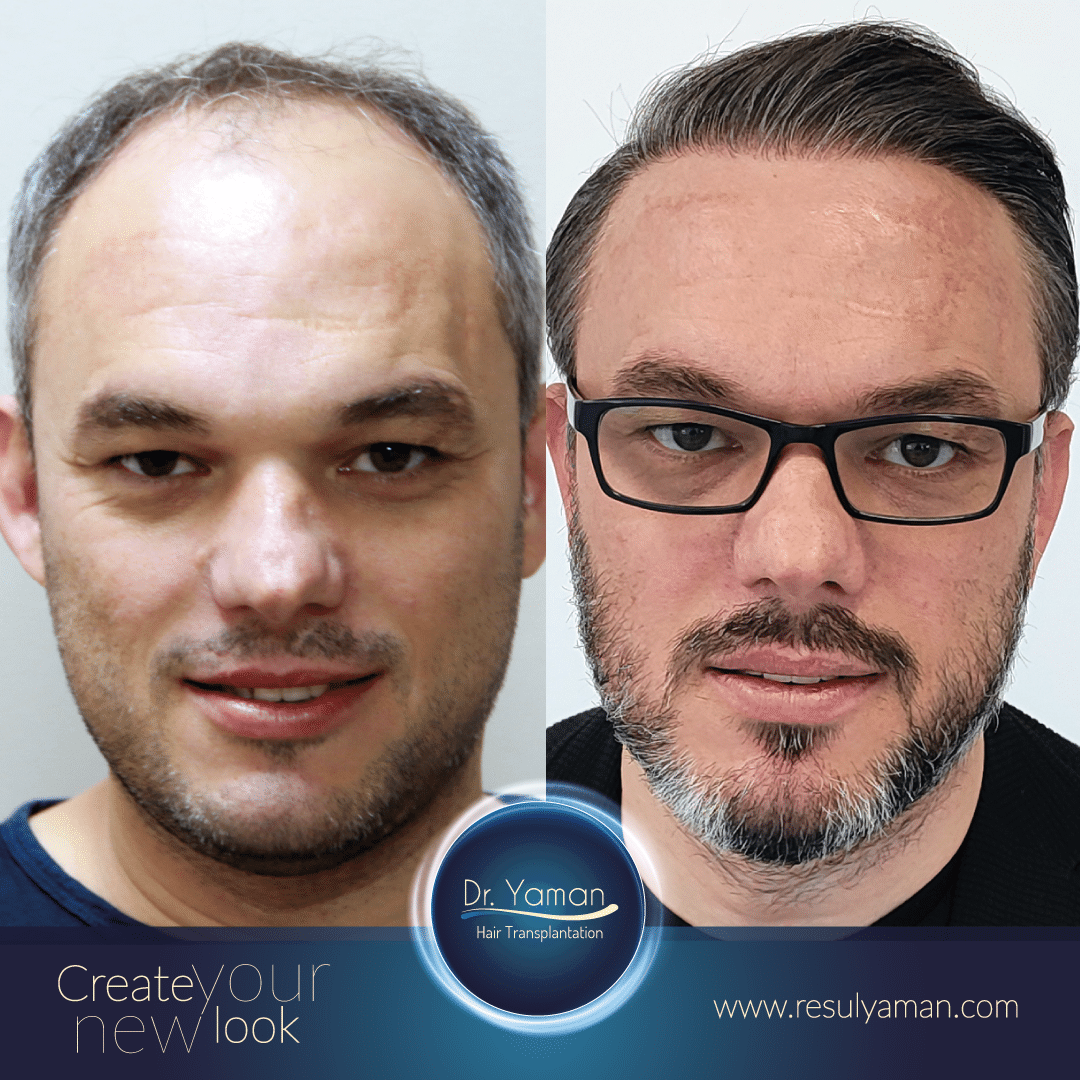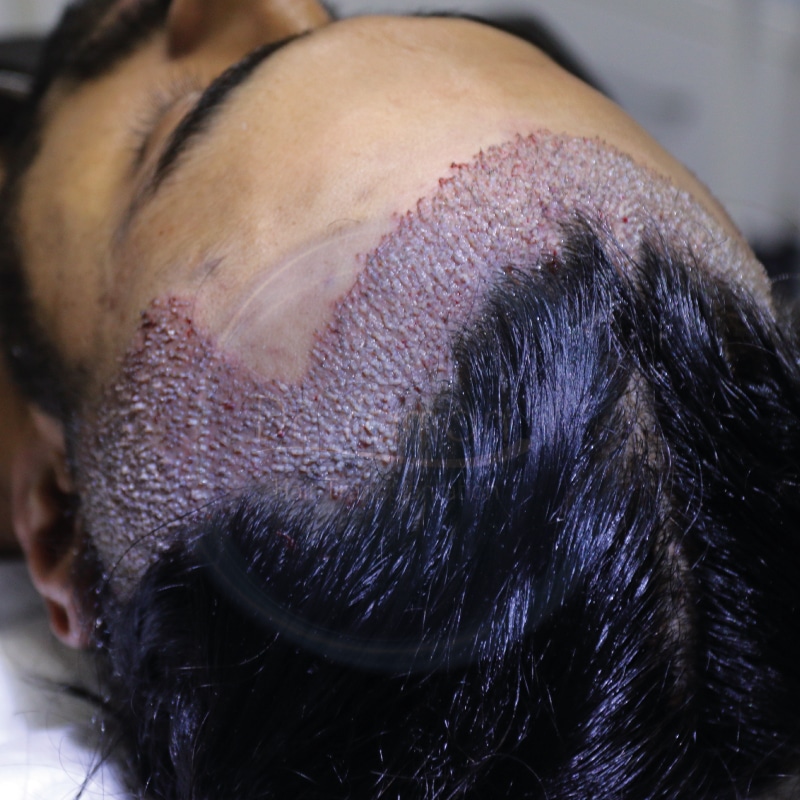If you’ve researched hair loss surgeries I wouldn’t be surprised if you were confused with all the acronyms and techniques. It can be overwhelming and how are you expected to know your FUEs from your DHIs and FUTs?!
Indeed, there is a lot to take in, but I aim to arm you with knowledge about two particular hair transplant procedures – Sapphire FUE vs FUE. In the guide below, I explain the premise behind FUE surgeries, the differences between classic FUE and Sapphire FUE, and how to decide which is the best option.
Understanding FUE Hair Transplants
Let’s first take a look at the generic FUE procedure and what it means. FUE stands for Follicular Unit Extraction and it is a more modern type of hair transplant surgery compared to the older FUT method.
Whereas FUT involves cutting a long, thin strip of skin containing hair grafts from the back of your head, FUE extracts individual grafts of around 2-5 hair follicles. These grafts are then implanted using surgical incisions in your areas of hair loss.
FUE offers numerous advantages over FUT with the main one being the comparative lack of scarring. The strip of skin removed during an FUT surgery leaves a long, thin scar that can be visible, whereas FUE leaves only tiny circular scars that are virtually invisible.
Classic FUE: Procedure, Pros, and Cons
When looking at the FUE hair transplant in Turkey, the important factor is the blade used. Once the hair grafts have been removed from the donor site, the surgeon uses a steel surgical blade to create small incisions in the recipient site.
The hair grafts are then inserted into these incisions where they will eventually heal and grow. Compared to FUT, classic FUE is now considered to be the standard and it is the most popular hair transplant procedure. It offers less scarring, quicker recovery times, higher success rates, and more natural end results compared to the older FUT.
Typically, FUE surgeries have success rates of 90%+, but more commonly 95%+ which is generally superior to FUT. Additionally, providing the surgery went OK, you can realistically expect to be back at work within 3 days if you do not have a customer-facing role.
In terms of coverage, a single FUE session can harvest and transplant between 3000-5000 grafts which means it is a great option if you have more severe hair loss. This contrasts with something like DHI surgery where only 1500-3000 grafts can be implanted per session due to the tools used.
Pros
- Much faster recovery times compared to FUT
- Virtually invisible scarring when hair is fully grown compared to FUT
- Between 3000-5000, grafts can be implanted per session
- High success rates of 90-95%+
- Less scalp trauma compared to FUT
Cons
- Less directional and depth control compared to Sapphire FUE
- More potential for post-op complications compared to Sapphire FUE
Sapphire FUE: Procedure, Pros, and Cons
Sapphire FUE can be seen as the natural evolution of FUE hair transplants. When looking at FUE vs Sapphire FUE, the ONLY difference is the surgical tool used to create the incisions in which the hair grafts are implanted.
Sapphire FUE as the name suggests uses a sapphire-enhanced blade instead of the traditional steel blade. The sapphire blade has a V-shape and allows for far greater control and precision when making the incisions, and when inserting the hair grafts.
Using the Sapphire blade, hair transplant surgeons can control the depth and angle of the incision better which means a faster healing process, and a more stable hair graft. Due to this improved precision, the surgeon can make sure the angle and direction of the hair grafts align with your existing hair and have a more natural look.
Essentially, if classic FUE was version 1.0, Sapphire FUE would be the improved version 1.1 and for all intents and purposes is the better choice without any drawbacks compared to the classic steel-blade method.
Pros
- Extremely fast recovery times compared to other surgery types
- Virtually indetectable scarring compared to FUT
- Slightly higher success rates compared to classic FUE
- Lass scalp trauma compared to FUT and FUE
- Great for natural-looking end results
- Increase hair density for severe hair loss cases
Cons
- Less directional control compared to DHI
Also Read: DHI vs FUE Hair Transplant
Which is the Right Technique for You?
I hope you now know the difference between classic FUE vs Sapphire FUE and from this, you should already have an idea of which procedure is the better option.
Sapphire FUE is an evolution of classic FUE utilizing more advanced tools, ultimately for better end results. Therefore, if your hair transplant clinic offers this surgery, it is the preferred method compared to classic FUE.
The sapphire-enhanced blade gives greater control, precision, and end results compared to the traditional steel-based blades without any drawbacks.
 WhatsApp
WhatsApp Get Mail!
Get Mail!
 English
English Italiano
Italiano Español
Español Türkçe
Türkçe Português
Português Français
Français Deutsch
Deutsch عربي
عربي



